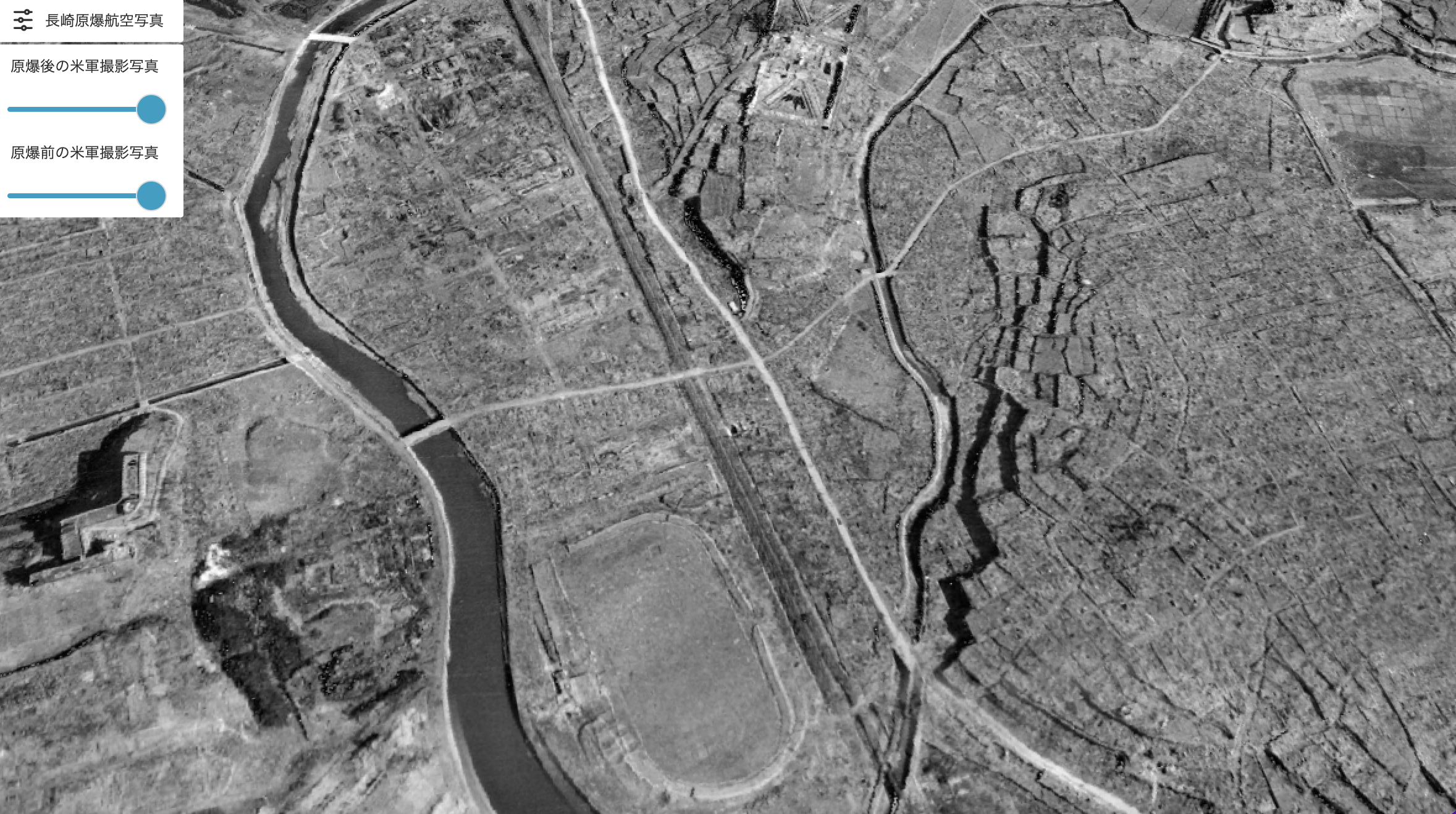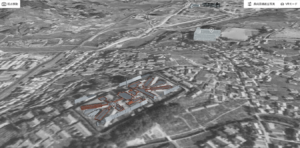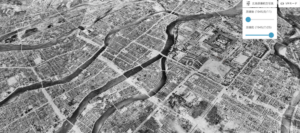Map Concept
The “Aerial Photo Archive” is an online map that seamlessly integrates aerial photos captured by the U.S. military before and after the bombing incidents. Visitors can compare and contrast the visual landscapes of Hiroshima and Nagasaki prior to and following the bombings.
By analyzing the topography and distance from the hypocenter, viewers can grasp the magnitude of destruction inflicted by the atomic bombs. Additionally, they can envision the daily life of those times through the perspective offered by the pre-bombing street views. Furthermore, for applications such as fieldwork, users can gain insights into the transformations undergone by the areas they walk through, both before and after the bombings.
-
1Nagasaki
Streetscape Before and After the Atomic Bombing

This online map was created by piecing together 121 aerial photographs of Nagasaki captured by the U.S. military on August 7 and September 7, 1945. Visitors can compare and contrast Nagasaki before and after the bombing, as well as the present-day Nagasaki.
MAP VIEW -
2Nagasaki
Photos Before and After the Atomic Bombing

The still photograph taken before and after the atomic bombing is placed on Map 1. By viewing the still photo along with the location where the photo was taken, visitors will be able to read more information.
MAP VIEW -
3Nagasaki
3D Buildings

Several buildings are rendered in 3D and placed on the Map 1. These detailed 3D structures were crafted by students from Nagasaki University. By juxtaposing these digital representations with the surrounding devastation, viewers can envision the appearance of these buildings during the time.
MAP VIEW -
4Hiroshima
Streetscape Before and After the Atomic Bombing

This online map was created by piecing together 87 aerial photographs of Hiroshima captured by the U.S. military on July 25 and August 7, 1945. Visitors can compare and contrast Hiroshima before and after the bombing, as well as the present-day Hiroshima.
MAP VIEW
